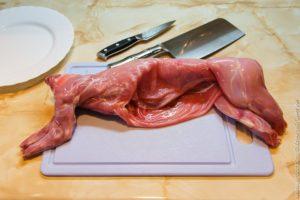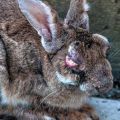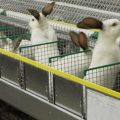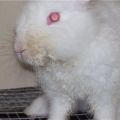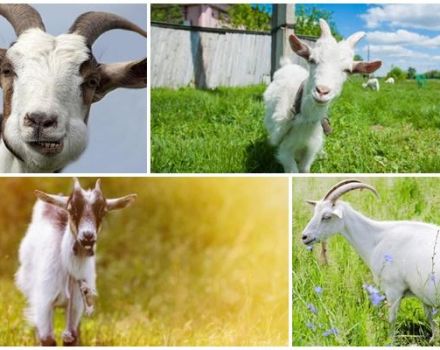Symptoms and treatment of rabbit diseases, what ailments are dangerous to humans
Rabbits are pets with strong immunity. The main enemies of their health are parasites and viruses. Furry animals rarely get sick, but seriously. You can guess about the disease by changing behavior and loss of appetite. But lethargy is a symptom of many rabbit diseases. The main of them, the animals become infected through food, water and sick fellows. But the exact cause and diagnosis can only be determined by a veterinarian.
Cysticercosis
The disease is caused by cestode tapeworms. The parasites infect the liver of rabbits. Cysticercosis occurs on rabbit farms. The disease is often detected after slaughter. Acute symptoms appear when a large number of parasites enter the body.
Signs of cysticercosis:
- apathy until complete loss of reactions;
- diarrhea;
- loss of appetite and weight;
- yellowness of the mucous membranes;
- enlarged liver.
The disease is dangerous for young and adults with weak immunity. A healthy rabbit gradually adapts to the presence of tapeworms in the body. Symptoms and treatment are about the same as for helminthiasis. Cysticercosis is treated with an anti-tapeworm drug, Praziquantel. They also check the quality of water and feed to prevent re-infestation.
Coccidiosis
The disease is caused by the bacteria coccidia. Microorganisms parasitize in the tissues of internal organs. There are intestinal, hepatic and mixed forms of coccidiosis.
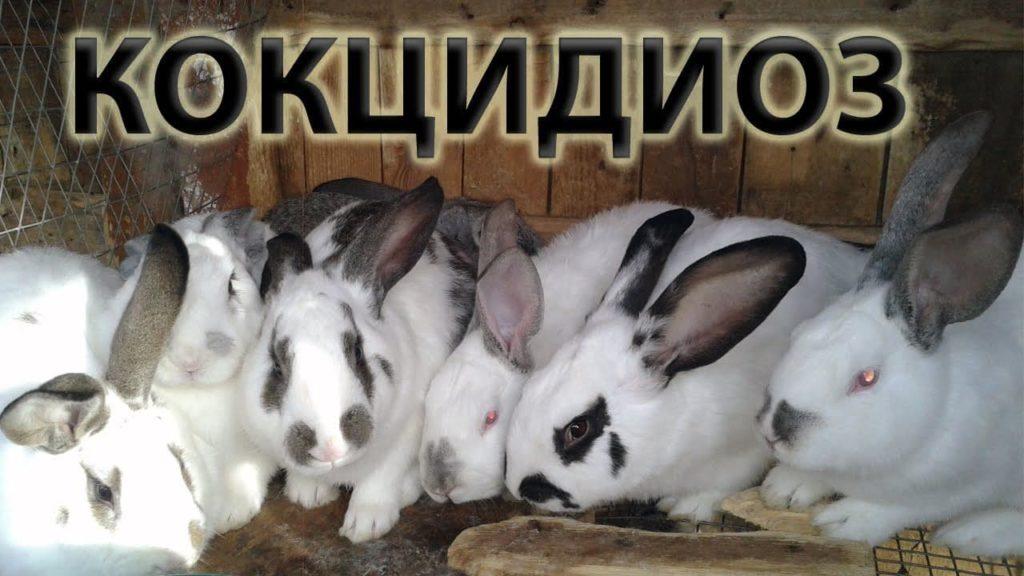
Rabbits become infected through food, water, and contact with a fellow carrier. The more bacteria enter the body, the more severe the disease progresses. Coccidiosis is dangerous for the immunity of animals.
Signs of a hepatic form:
- the animal drinks a lot, but eats little;
- sits hunched over in the corner of the cage;
- the animal's belly is swollen.
Liver damage is accompanied by jaundice, diarrhea. The pet is losing weight. In a chronic state, he can stay for 3-4 weeks. In the acute phase, rabbits suffer from diarrhea, fall into a coma and die within ten days.
With intestinal coccidiosis, the following symptoms are added:
- blood and mucus, green in droppings;
- pale mucous membranes of the mouth, eyes;
- tousled wool.
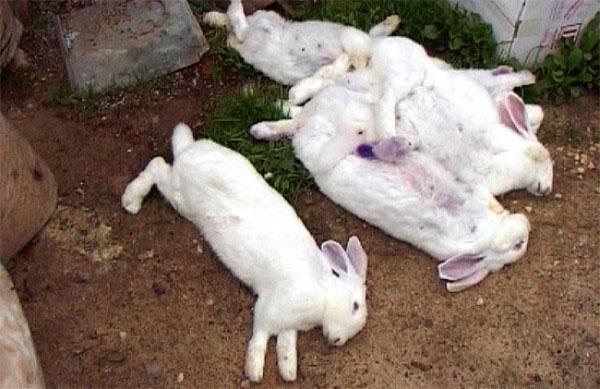
The disease manifests itself on the fourth or sixth day after infection. Intestinal coccidiosis is more susceptible to rabbits, elderly and weakened animals by other diseases. Due to the rapid weight loss, convulsions begin, and refusal to eat quickly leads to intestinal stasis. Coccidia are difficult to detect in feces, even with laboratory tests.
Against pathogens, animals are administered coccidiostatics, antibiotics for secondary infections and probiotics to restore intestinal function.
Pasteurellosis
Pasteurella causes an infectious disease. The bacterium infects the respiratory and digestive organs. There are two types of pasteurellosis:
- acute - develops and leads to death within two days. Manifested by high fever (41 degrees), loss of appetite, pallor of mucous membranes, swelling of the respiratory tract and intestines;
- chronic - loss of appetite is accompanied by diarrhea, shallow breathing, purulent nasal discharge.
Sources of the pathogen are domestic and wild birds. The acute phase of the disease is treated with antibiotics and sulfonamides. Treatment will help if you start it at the first sign. In chronic pasteurellosis, a sulfa drug and an antibiotic are alternated.

Myxomatosis
The myxomatosis virus is transmitted by mosquitoes, fleas, ticks and other blood-sucking insects. And also the rabbits that have recovered from the disease. Myxomatosis is a systemic disease, at the beginning of development it affects the skin, penetrates the lymph nodes and spreads throughout the body.
Symptoms:
- apathy;
- lack of appetite;
- puffy eyelids, wet eyes;
- clumped hair around the eyes;
- large blisters on the face, under the tail;
- blue discoloration of the mucous membranes;
- folds on the scalp.
The rabbit's condition deteriorates within three days: straight ears droop, vision and hearing fall. The disease is accompanied by a high temperature of 41 degrees. There is also a nodular form. Instead of blisters, nodules appear on the skin. Then necrosis begins in their place.
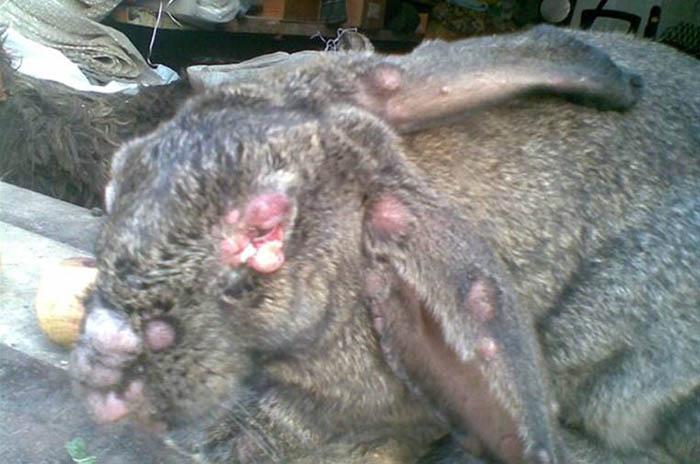
Symptoms begin on the third day after infection or after an incubation period that lasts up to ten days. Against the background of chronic myxomatosis, a secondary infection caused by staphylococcus, pneumonia develops. There is no cure for the virus. Rabbits are vaccinated with a complex vaccine against myxomatosis and viral hemorrhagic disease. With a nodular form, 50% of animals survive. Relief comes on the tenth day, and recovery on the thirtieth or forty-fifth day.
In acute edematous myxomatosis, rabbits die or the disease becomes chronic. In this case, the rabbits should be treated with antibiotics for secondary infection.
Fascioliasis
The disease is caused by the trematode parasite. Fascioliasis affects animals that are fed with grass from a marsh area. Pathogens live in the liver.
Symptoms:
- oppression;
- refusal to eat;
- yellowness of the mucous membranes.
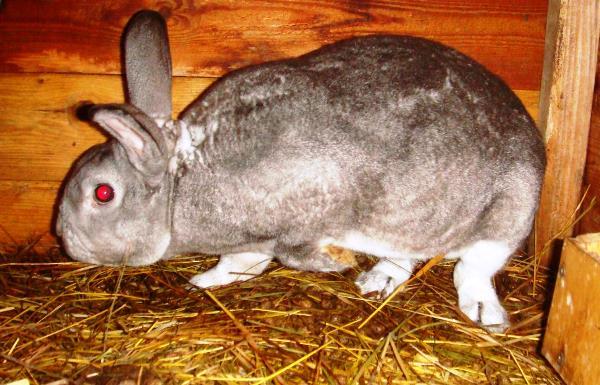
In sick rabbits, the liver is painfully enlarged. Animals are prescribed anthelmintic drugs, grass and water from other sources.
Listeriosis
The disease got its name from the pathogen bacteria - listeria. Dangerous microorganisms are transmitted through the faeces of sick animals. Listeriosis in the hyperacute phase has no symptoms. The rabbit dies suddenly. The acute phase in pregnant rabbits is recognized by miscarriage, subsequent loss of vitality and hair loss. Death occurs on the second or fourth day.
The disease is incurable. Only vaccination is carried out against listeriosis. Immunity in vaccinated animals lasts for 5 months.
Tularemia
Carriers of the disease are rats, mice and rabbit lice. Tularemia has no obvious signs. In sick rabbits, the lymph nodes are inflamed, which is also characteristic of staphylococcosis. Tularemia can only be recognized by a specialist, but there is no cure.
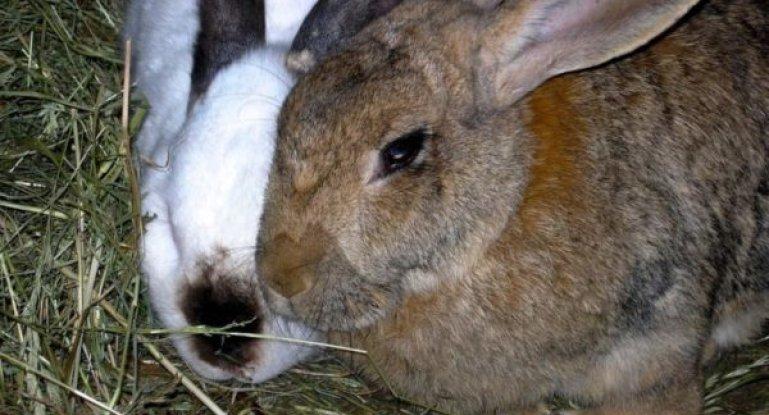
Sick rabbits are destroyed, the premises are disinfected, and grass from local fields is excluded from the diet of healthy animals.
Infectious rhinitis
The causative agents of bacterial diseases are staphylococci, pasteurella, streptococci. Rabbits become infected from sick relatives and humans. The bacteria live on dishes, bedding, clothing and shoes.
Rhinitis symptoms:
- frequent sneezing;
- redness of the nose;
- white discharge;
- crust around the nostrils.
Due to the weakening of immunity, concomitant diseases develop: otitis media, conjunctivitis, stomatitis, skin abscesses and sepsis. Rhinitis caused by the bacterium bordetella is complicated by bronchitis and pneumonia. Without treatment, the animal will die in 1-2 months.

If the rabbit is sick with an infectious rhinitis, you need to strengthen its immunity. Derinat or Ribotan are used for immunomodulation. In the acute course of the disease, antibiotics are prescribed. A furatsilin solution made from an effervescent tablet is dripped into the nose - 500 milligrams are dissolved in fifty grams of boiling water. After cooling to room temperature, it is instilled dropwise into each nostril 6 times a day.
Trichophytosis - ringworm and ticks
A skin disease is caused by a fungus. Its spores are found in bedding, feed, animal hair. Lichen often affects young rabbits. Trichophytosis symptoms appear on the eighth or fourteenth day:
- peeling skin;
- hair falls out.
Blisters appear in the bald patches and become covered with a gray crust. Similar symptoms occur with an infection with pruritic mites.
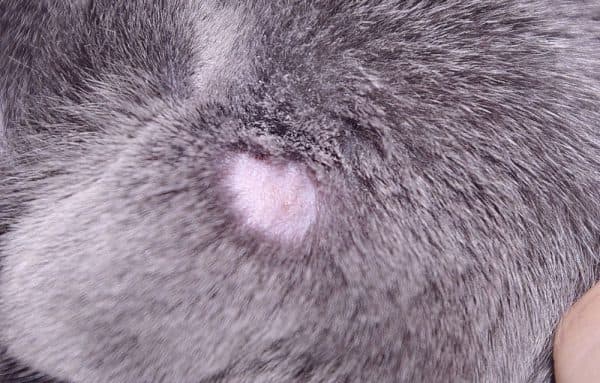
Trichophytosis at the initial stage is treated with emollients and antiseptic agents. The affected areas are smeared with petroleum jelly, fish oil. The next day, peel off the crusts, shave off the wool around and apply salicylic acid solution, Yam ointment, nitrofungin or mycoseptin. Against ticks, therapeutic bathing in a solution of Neguvone or bromocycline is used.
Pneumonia
Pneumonia develops due to bronchitis caused by infection or adverse conditions.
Symptoms:
- heat;
- dyspnea;
- cough;
- mucous, purulent nasal discharge.

It is possible to cure a rabbit at the onset of the disease with the help of antihistamines, antibiotics, vitamins, and immunomodulators.
Poisoning and gastrointestinal diseases
Bowel diseases include:
- the formation of a hairball in the stomach - the wool sticks together, hardens and blocks the digestive tract;
- enteritis - inflammation of the small intestine, often develops against the background of diseases that destroy the microflora;
- gastrointestinal stasis or bloating - occurs due to poor quality feed, lack of fiber.
Diseases of the gastrointestinal tract are dangerous for domestic rabbits, as they refuse food, suffer from constipation and die from intoxication.
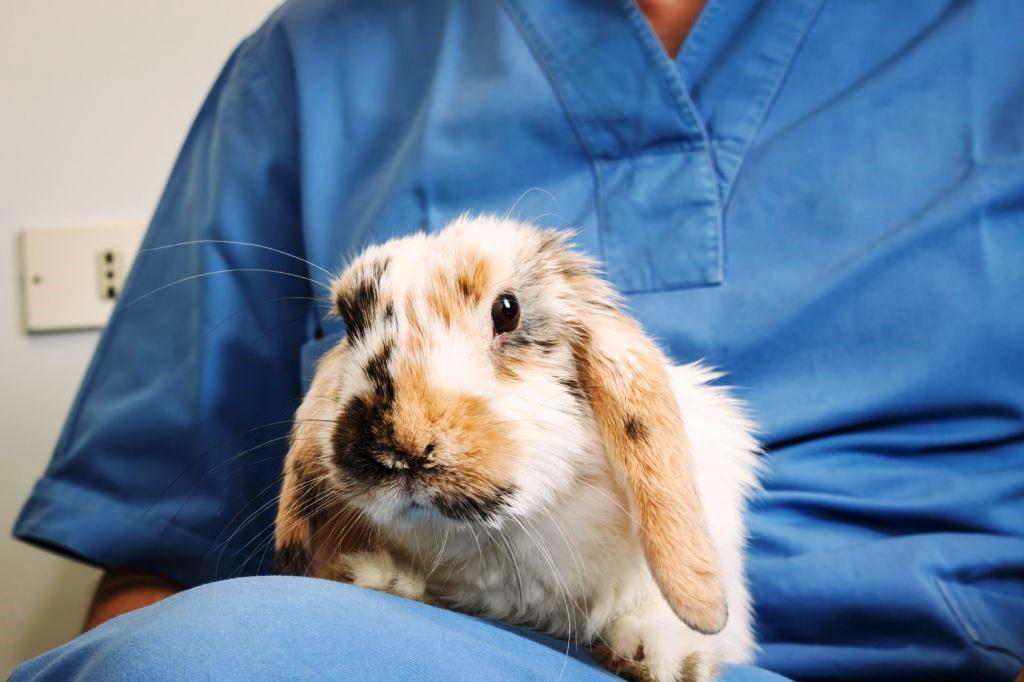
In case of poisoning, already familiar symptoms appear: lethargy, loss of appetite and stool disturbance. To help the animal, you need to balance the diet with fiber and eliminate intestinal irritating foods, such as cabbage.
Fleas
Blood-sucking insects settle in wool, carry the pathogen of myxomatosis and cause anemia.
Flea symptoms:
- the rabbit often itches, bites out the wool;
- black spots are visible on the withers and along the spine.
Fleas are combed out, animals are bathed with anti-flea shampoos. Treatment solutions are applied to the neck and back.
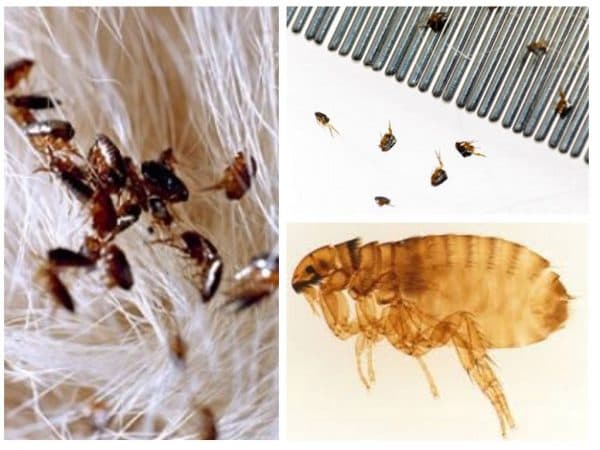
Worms
Helminthiasis is caused by parasitic microorganisms of a tape, round or flat shape. Sources of infection are feces, green fodder, water. Often, worms do not cause symptoms. But you should be on your guard if the pet eats a lot, but loses weight and often vilifies.
What can you get from a rabbit to a person
Diseases transmitted to humans:
- fascioliasis;
- tularemia;
- pasteurellosis;
- listeriosis;
- cysticercosis;
- scabies;
- hemorrhagic disease.
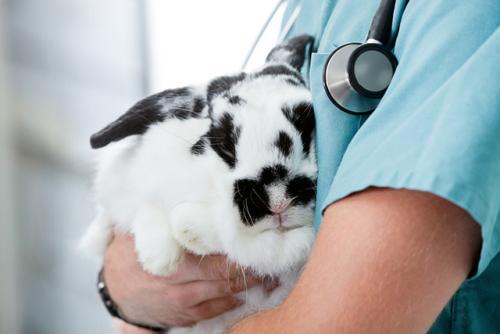
You can get infected from decorative and farm breeds. Gloves should be worn before contact with sick animals. Helminths enter the human body after eating the liver and meat of rabbits.
Prevention measures
How to keep your pets healthy:
- cover the cages with mosquito nets;
- find out in the veterinary clinic about the epidemiological situation;
- vaccinate against myxomatosis, pasteurellosis;
- change the cage and dishes after the animal recovers;
- wash drinkers, feeders, regularly refresh the bedding;
- comb the coat 2 times a week;
- for normal digestion and prevention of the formation of lumps in the stomach, feed with hay from meadow grasses, twigs of fruit trees, vegetables that contain fiber;
- to prevent obesity, keep in a spacious cage, release for a walk.
To prevent animals from getting sick, you need to buy environmentally friendly food from trusted suppliers, keep the cells clean and warm.
